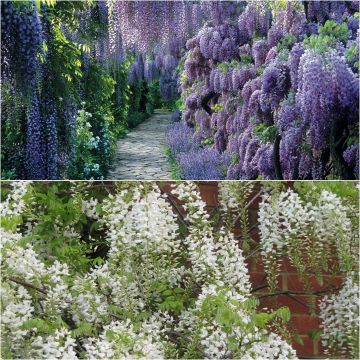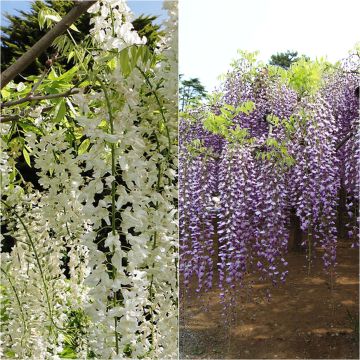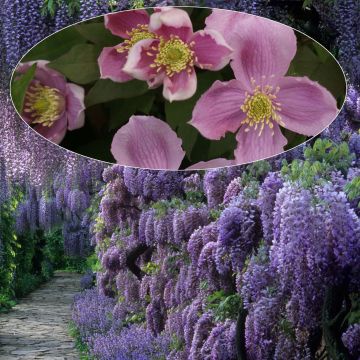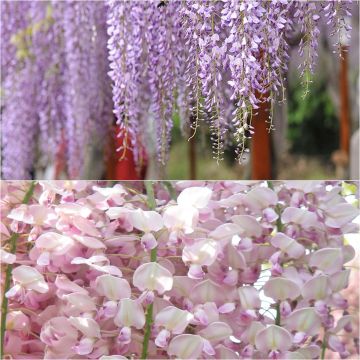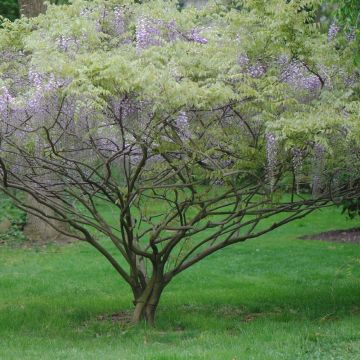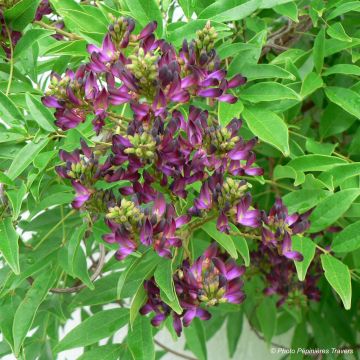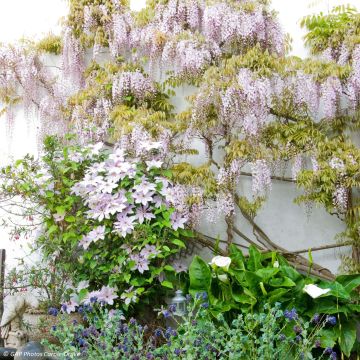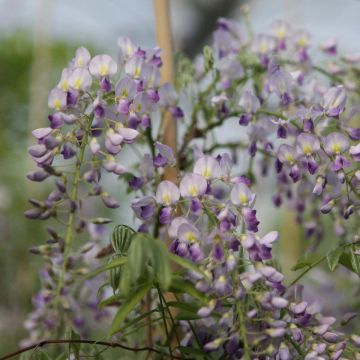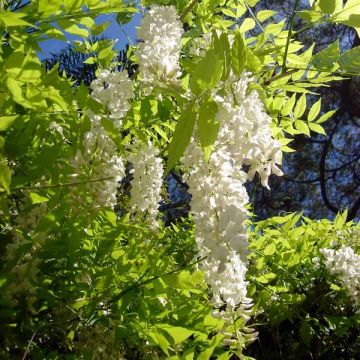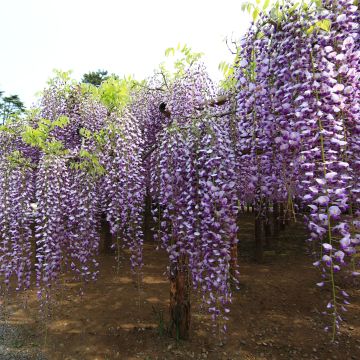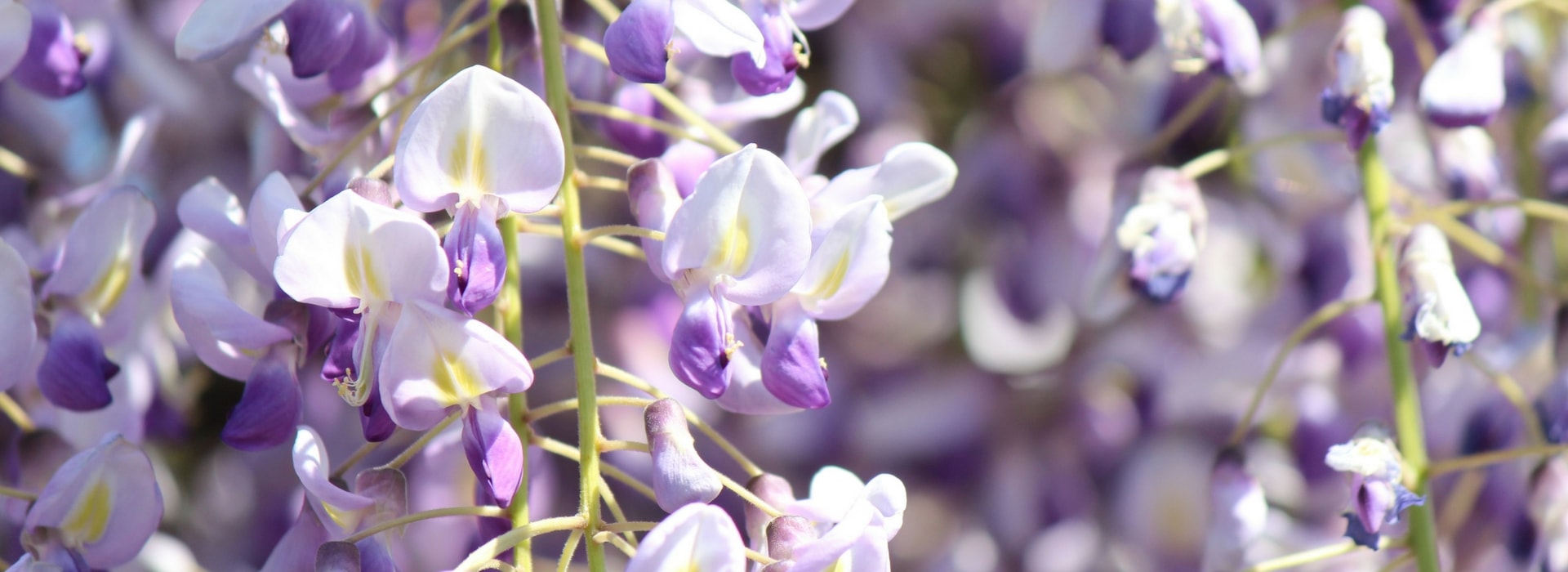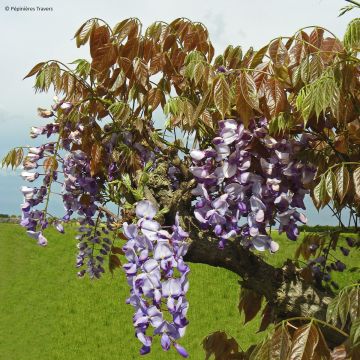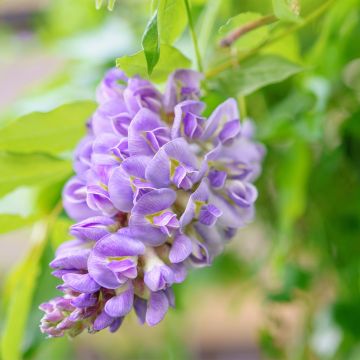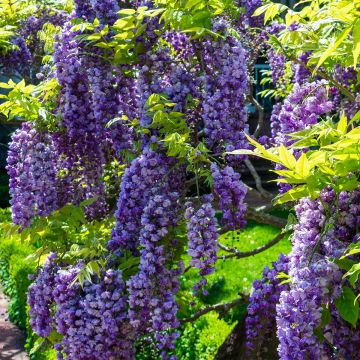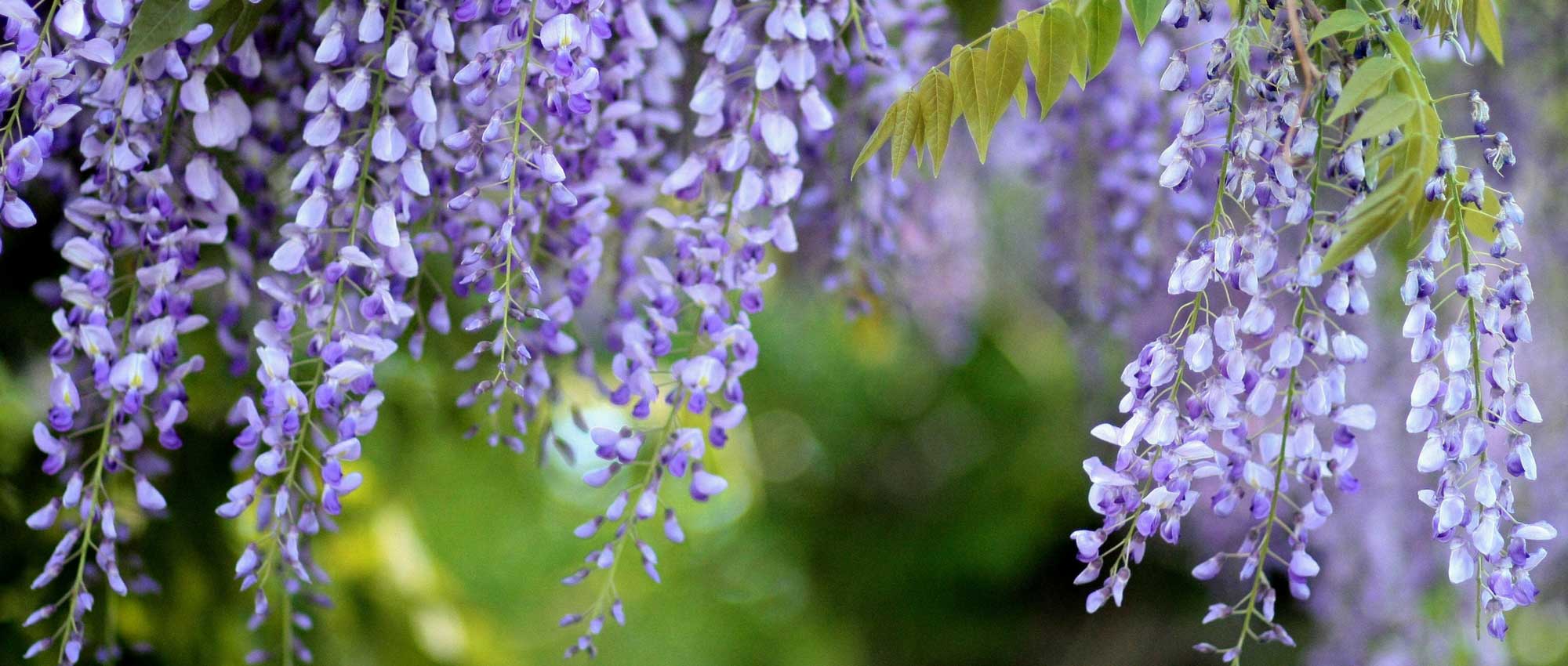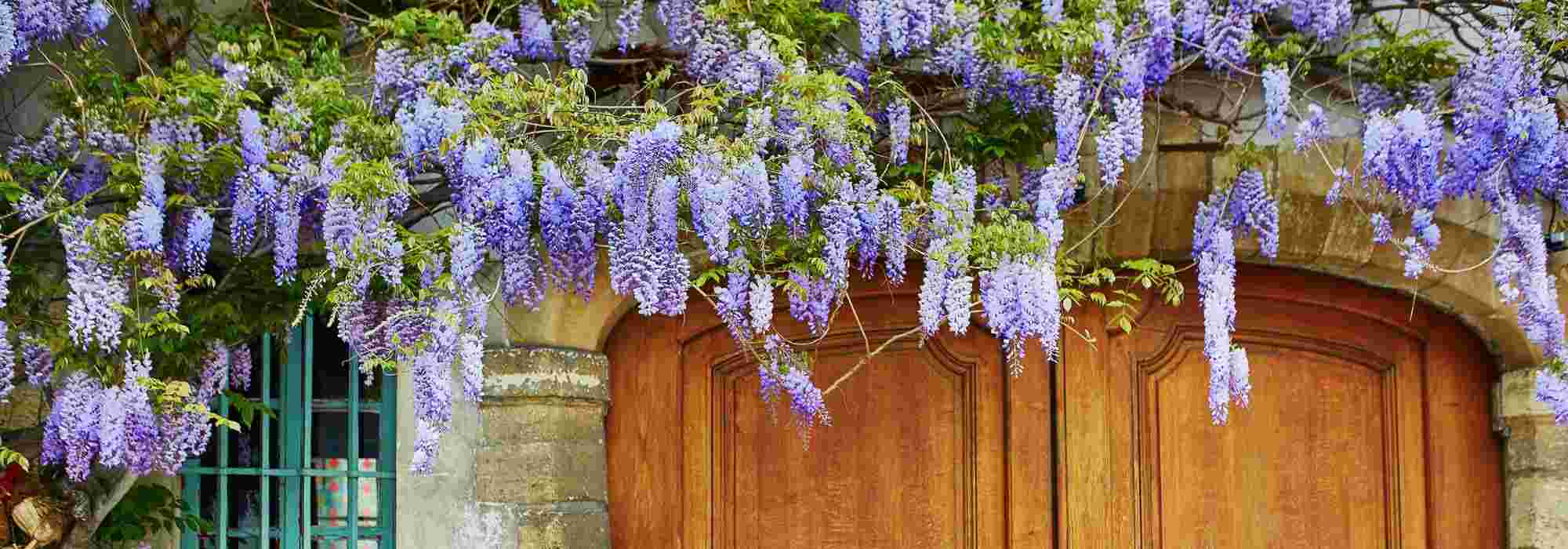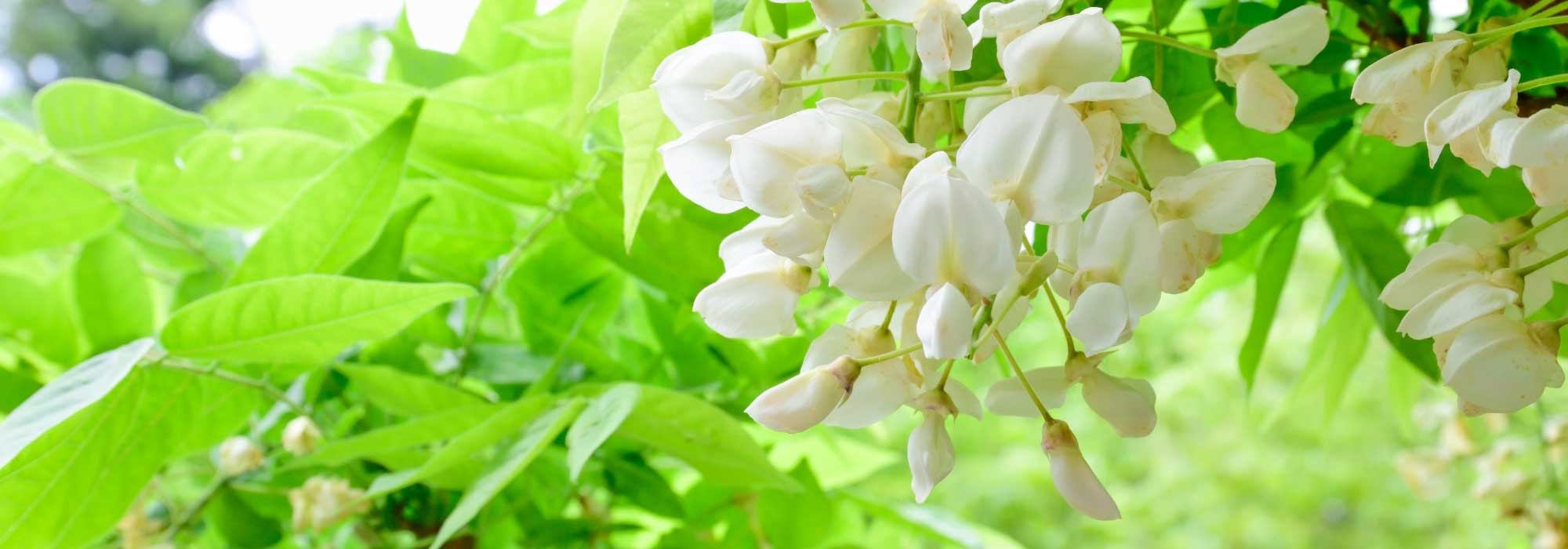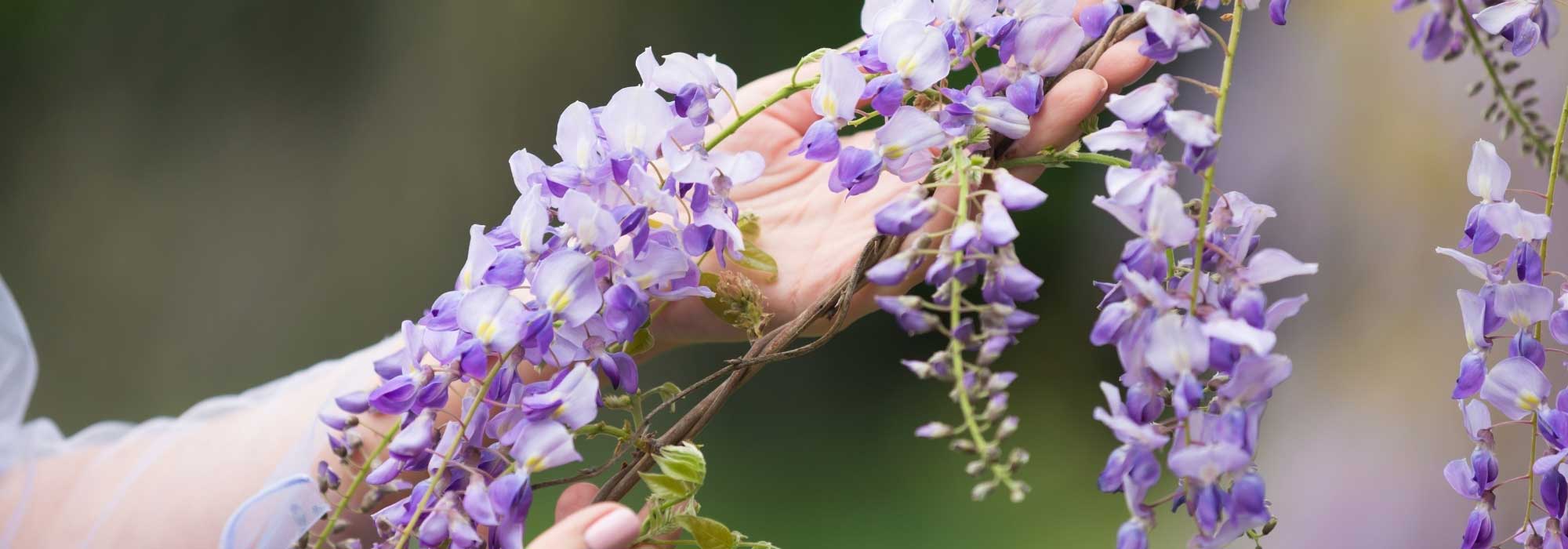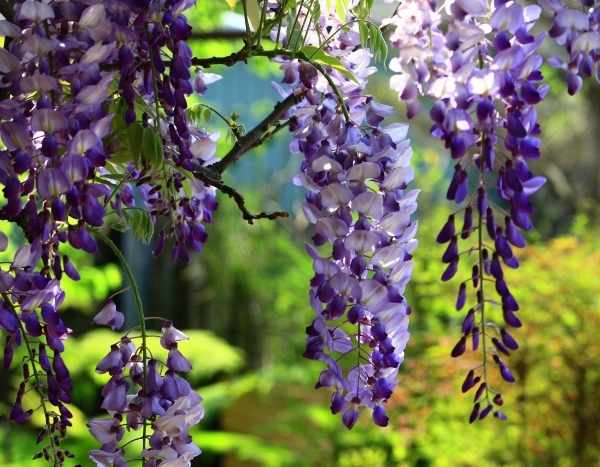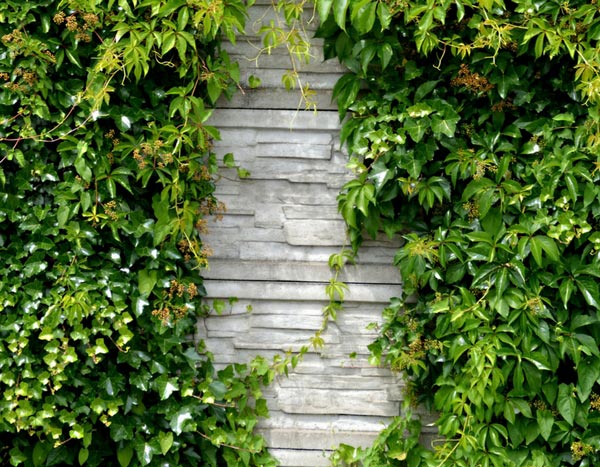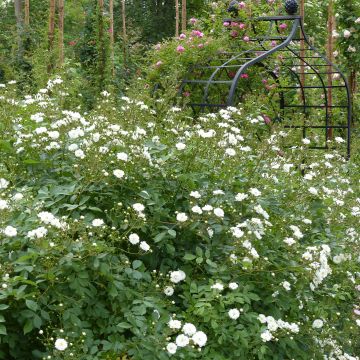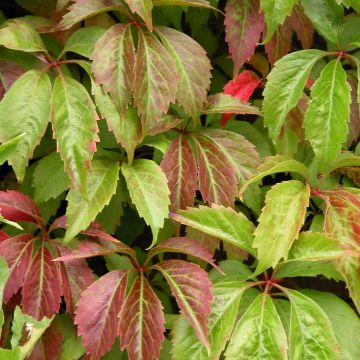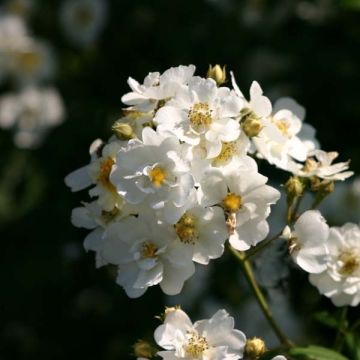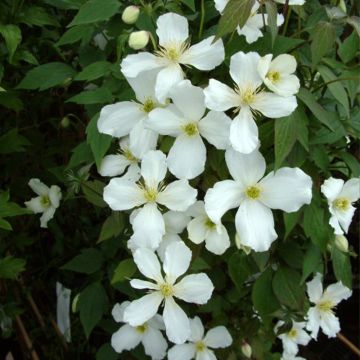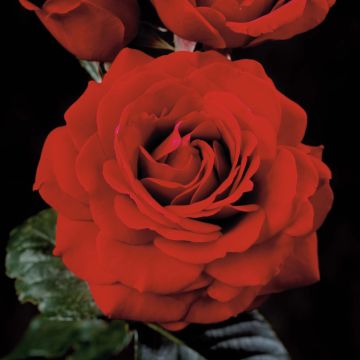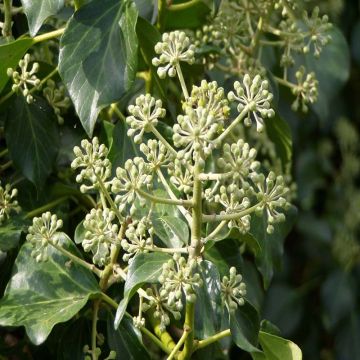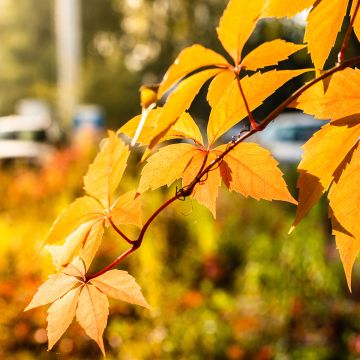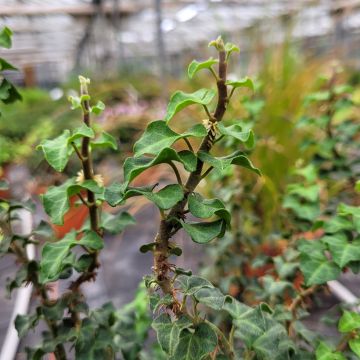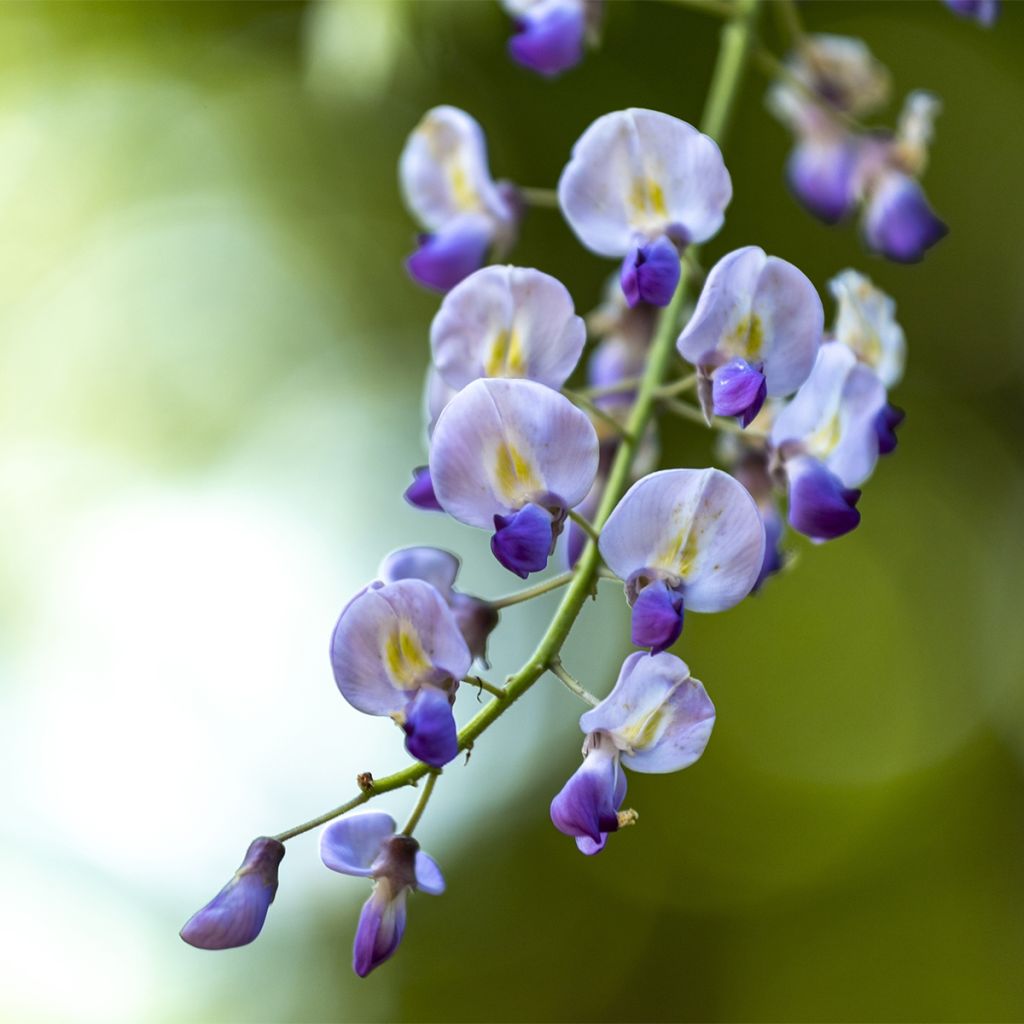

Wisteria floribunda Premature
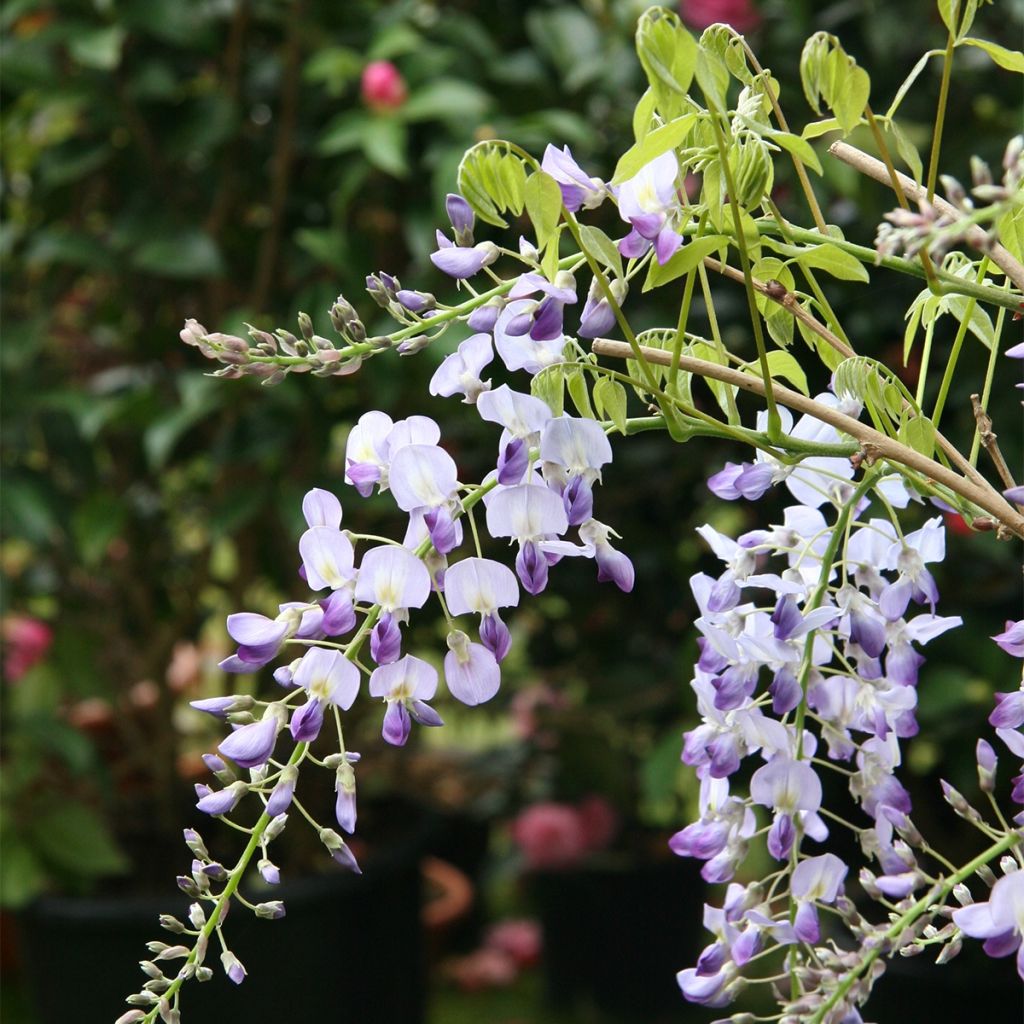

Wisteria floribunda Premature
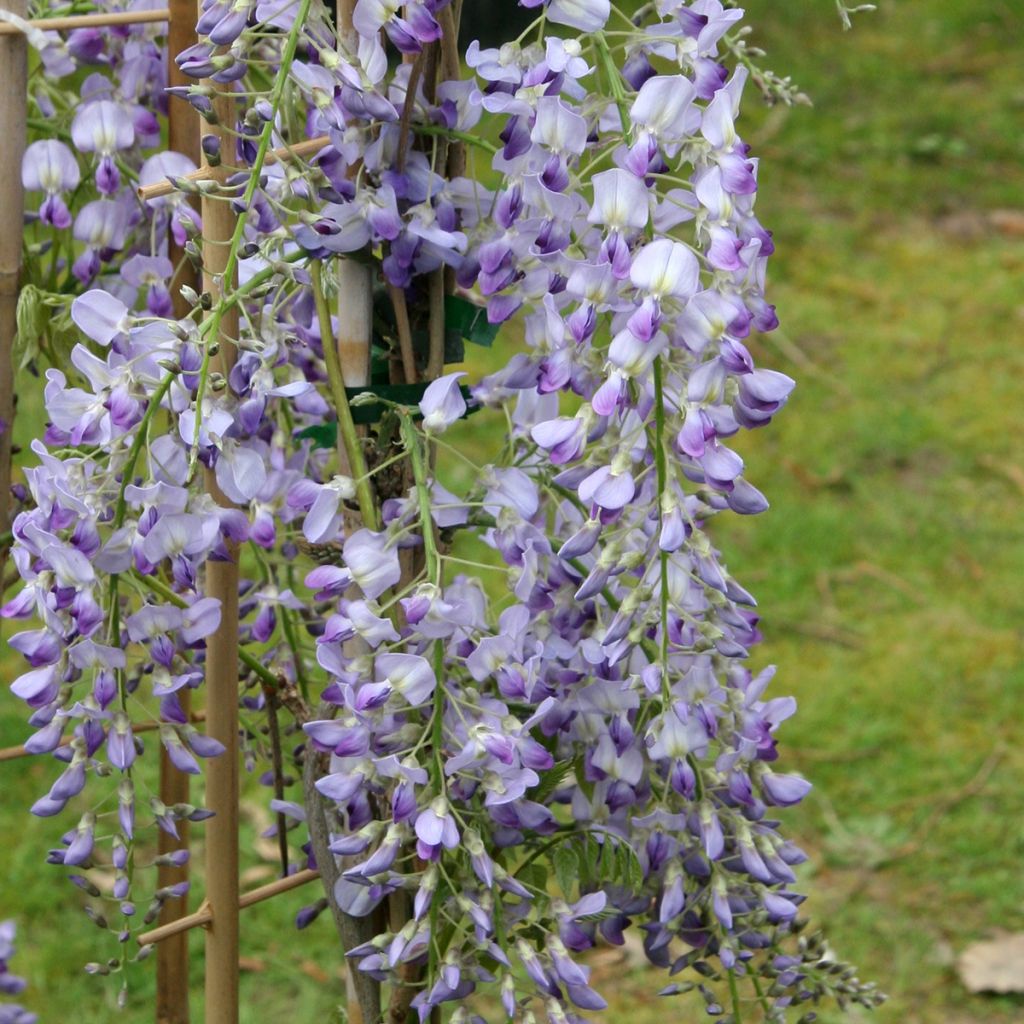

Wisteria floribunda Premature
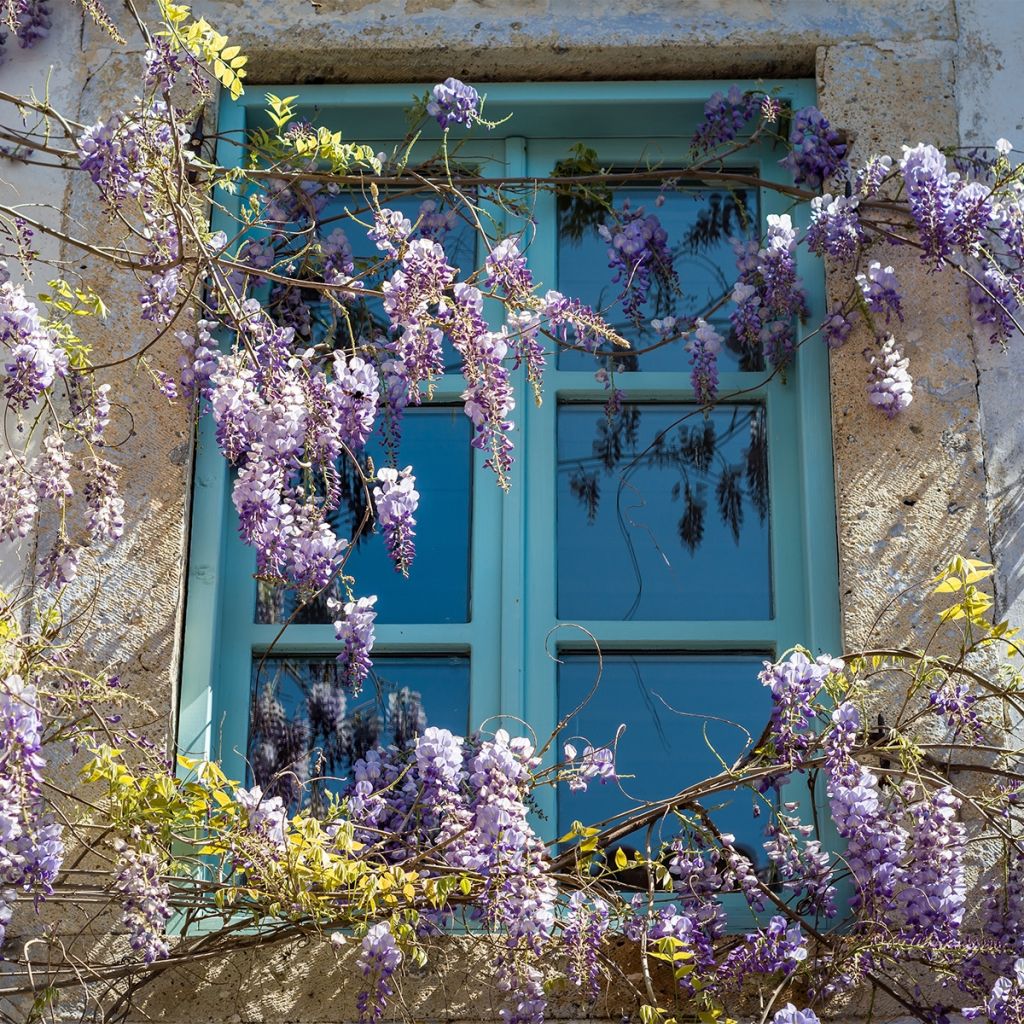

Wisteria floribunda Premature
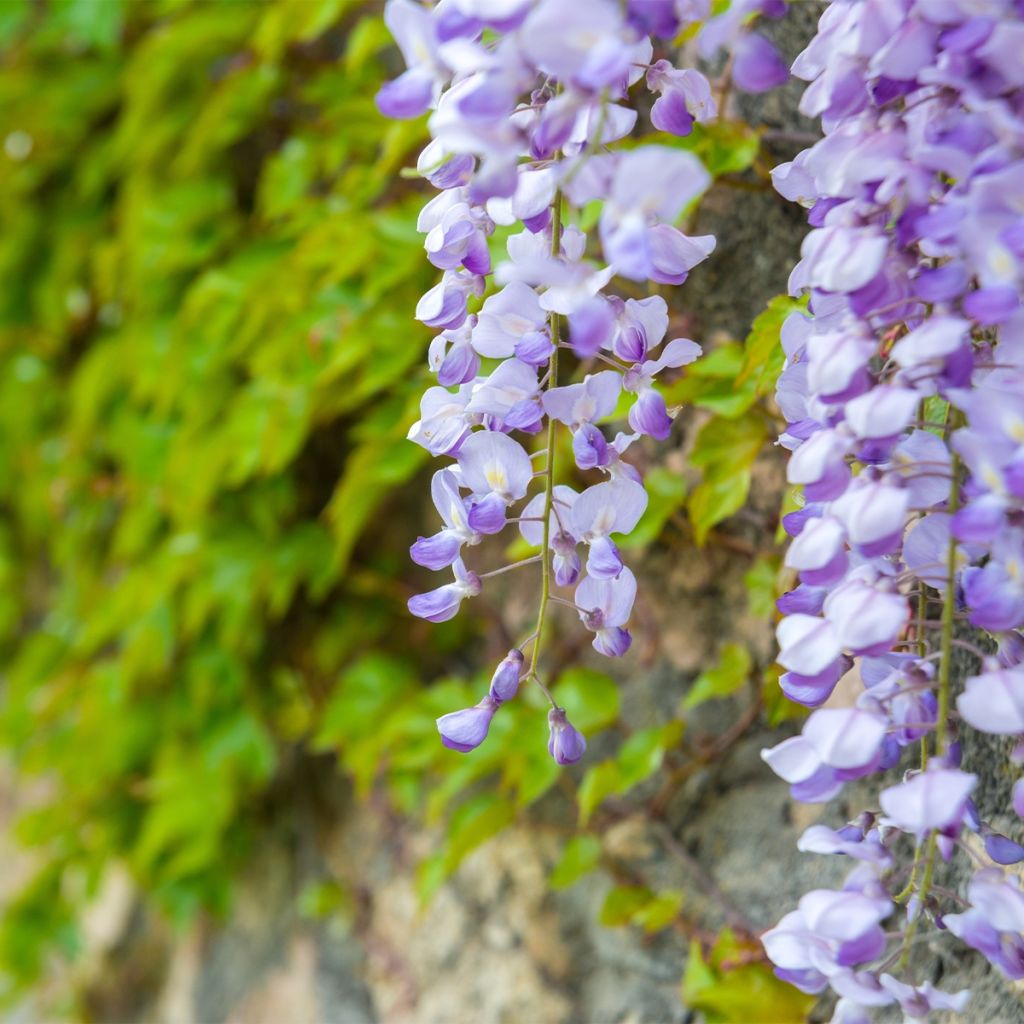

Wisteria floribunda Premature
Wisteria floribunda Premature
Wisteria floribunda Premature
Japanese Wisteria
Special offer!
Receive a €20 voucher for any order over €90 (excluding delivery costs, credit notes, and plastic-free options)!
1- Add your favorite plants to your cart.
2- Once you have reached €90, confirm your order (you can even choose the delivery date!).
3- As soon as your order is shipped, you will receive an email containing your voucher code, valid for 3 months (90 days).
Your voucher is unique and can only be used once, for any order with a minimum value of €20, excluding delivery costs.
Can be combined with other current offers, non-divisible and non-refundable.
Why not try an alternative variety in stock?
View all →This plant carries a 6 months recovery warranty
More information
We guarantee the quality of our plants for a full growing cycle, and will replace at our expense any plant that fails to recover under normal climatic and planting conditions.
Does this plant fit my garden?
Set up your Plantfit profile →
Description
Wisteria floribunda Premature is a variety of Japanese wisteria that is interesting for its ability to flower from a young age, starting from the first or second year. Just like its sisters, it blooms abundantly before the leaves fully unfold, and then again more timidly in summer, among the lush foliage. Its clusters of mauve-blue flowers emit a light fragrance in calm weather. Its long twining stems twist clockwise around their support, unlike those of its Chinese cousin. Wisterias are vigorous climbers that transform grids, fences, arbours, and pergolas in spring.
The Japanese wisteria, Wisteria floribunda in Latin, is a fast-growing climbing plant belonging to the large Fabaceae family, like clover, alfalfa, and lupins. It is native to Japanese forests and was introduced to Europe in the mid-19th century. Its long twining stems, which can reach or exceed 10 metres in length, lignify with age. Sometimes a bit slow to establish, it is a robust plant, perfectly resistant to cold, not very demanding in terms of soil (although it fears excessive active limestone), capable of growing in poor and dry soils in summer if they are deep. Its roots are deep and trailing.
The 'Premature' variety is a natural hybrid that is mainly distinguished by its early flowering. Its stems naturally wrap around supports. The growth of new shoots is very rapid, reaching several metres in a single season in cool soil. The flowering takes place shortly after that of Chinese wisterias, in May-June, even on young plants. It develops on branches located near the lignified main stems. It takes the form of pendulous clusters of papilionaceous flowers, measuring 18 to 24 cm in length, less fragrant than those of Chinese wisteria, but more staggered on the vegetation. They open successively, from the base to the tip of the cluster. After the flowers, pendulous pods appear, flat and green, turning brown when ripe. The young bronze-coloured leaves appear just before flowering and then turn a light green colour. They are 20 to 30 cm long and divided into 13 to 19 ovate leaflets, giving the foliage a light appearance. Before falling in autumn, the leaves take on a beautiful warm golden colour. Very long-lasting, the Premature Wisteria can live well over 50 years. Its flowering is nectar-bearing and honey-producing.
The 'Premature' Japanese wisteria is the epitome of a romantic plant. A queen in the realm of climbing plants, capable of enhancing a facade or structure, no matter how modest. This vibrant plant often outlives the person who planted it, in old neglected gardens. It is also particularly useful for covering a wall or hiding an unsightly fence. It wraps itself around a fence or trellis without restraint if left to its own devices and tends to smother surrounding plants. It is best suited for a solitary position, in full sun or partial shade in warm climates. Alternatively, it can be paired with equally robust honeysuckles, such as Lonicera (x) delavayi, which is evergreen and has fragrant yellow summer flowering, or with the Banksia rose 'Alba Plena', thornless and covered in small white pompom-like flowers in May. The floribunda wisteria also pairs well with the Clematis montana.
However, be patient: the first flowering of the Wisteria may not appear for 2 to 3 years, depending on the growing conditions.
Wisteria floribunda Premature in pictures
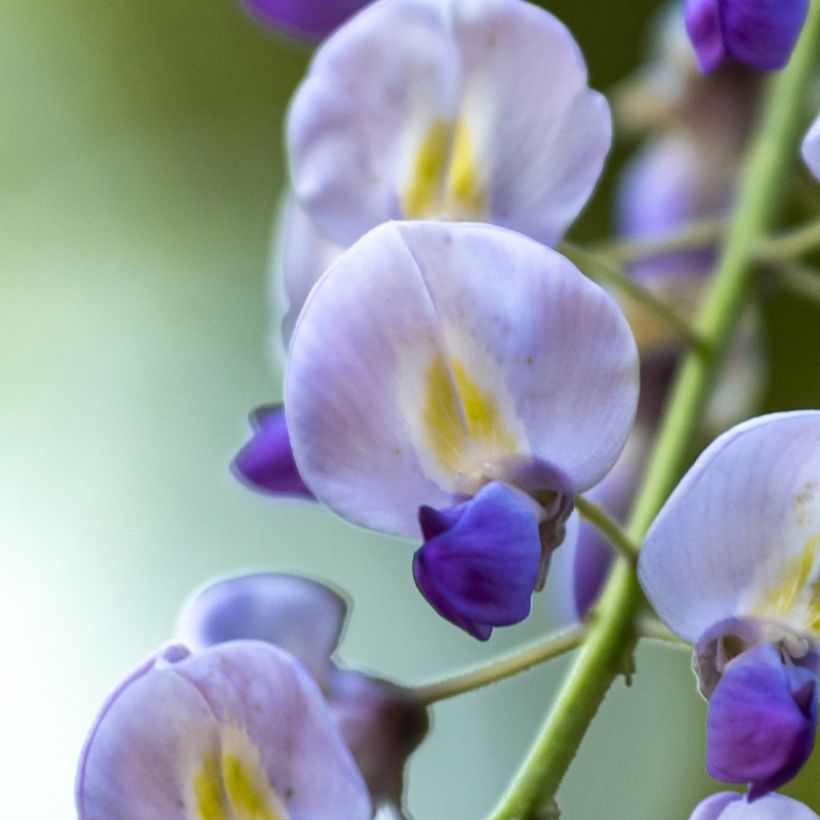

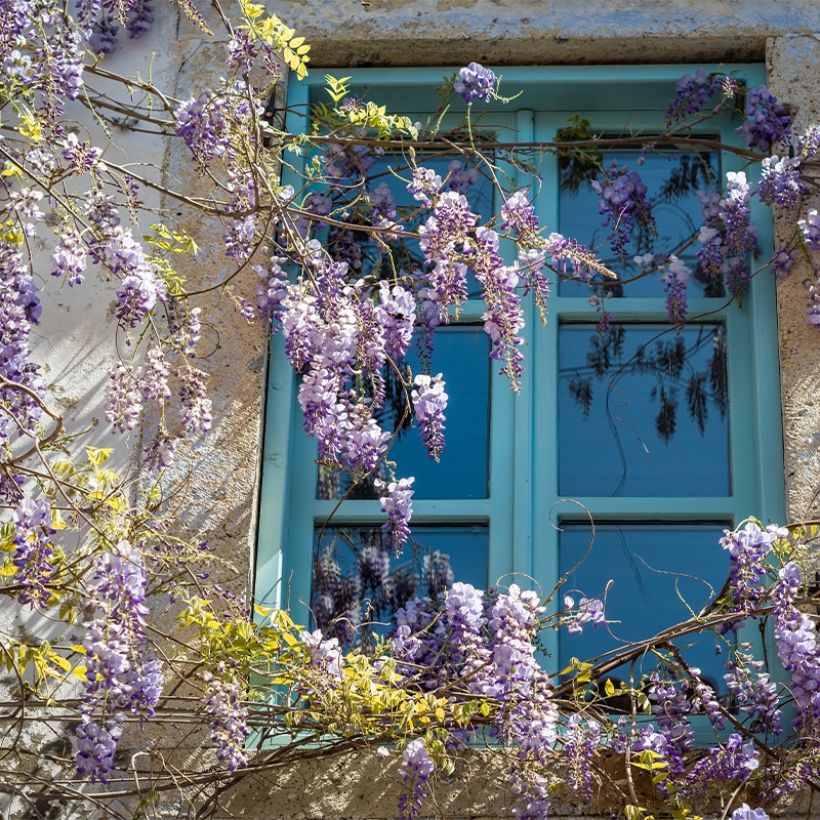

Plant habit
Flowering
Foliage
Botanical data
Wisteria
floribunda
Premature
Fabaceae
Japanese Wisteria
Cultivar or hybrid
Other Wisterias
View all →Planting and care
The Premature Wisteria is an easy-to-grow plant in most regions, as long as the soil it is planted in is sufficiently deep. It can grow in any garden soil, with a preference for poor soils. However, it prefers an acidic to neutral soil and may wither in overly alkaline soil. Once established, it can withstand summer drought and does not require any watering, even in a Mediterranean climate. Plant it along a wall or train it on a pergola. Pruning is recommended for better flowering: in March-April, after the last frost, when the buds have appeared, cut back the current year's branches after two or three buds and remove weak branches. Training pruning should be done in August. To improve the hardiness of Wisteria floribunda, which is already quite good, plant it in well-draining soil, trained on a south-facing wall, and it will withstand very harsh winters more easily.
Wisterias can be trained as trees by growing them on a "parasol" stake of 1.5 to 2 m, or used as ground cover in a large wild garden.
Planting period
Intended location
Care
Planting & care advice
This item has not been reviewed yet - be the first to leave a review about it.
Similar products
Haven't found what you were looking for?
Hardiness is the lowest winter temperature a plant can endure without suffering serious damage or even dying. However, hardiness is affected by location (a sheltered area, such as a patio), protection (winter cover) and soil type (hardiness is improved by well-drained soil).

Photo Sharing Terms & Conditions
In order to encourage gardeners to interact and share their experiences, Promesse de fleurs offers various media enabling content to be uploaded onto its Site - in particular via the ‘Photo sharing’ module.
The User agrees to refrain from:
- Posting any content that is illegal, prejudicial, insulting, racist, inciteful to hatred, revisionist, contrary to public decency, that infringes on privacy or on the privacy rights of third parties, in particular the publicity rights of persons and goods, intellectual property rights, or the right to privacy.
- Submitting content on behalf of a third party;
- Impersonate the identity of a third party and/or publish any personal information about a third party;
In general, the User undertakes to refrain from any unethical behaviour.
All Content (in particular text, comments, files, images, photos, videos, creative works, etc.), which may be subject to property or intellectual property rights, image or other private rights, shall remain the property of the User, subject to the limited rights granted by the terms of the licence granted by Promesse de fleurs as stated below. Users are at liberty to publish or not to publish such Content on the Site, notably via the ‘Photo Sharing’ facility, and accept that this Content shall be made public and freely accessible, notably on the Internet.
Users further acknowledge, undertake to have ,and guarantee that they hold all necessary rights and permissions to publish such material on the Site, in particular with regard to the legislation in force pertaining to any privacy, property, intellectual property, image, or contractual rights, or rights of any other nature. By publishing such Content on the Site, Users acknowledge accepting full liability as publishers of the Content within the meaning of the law, and grant Promesse de fleurs, free of charge, an inclusive, worldwide licence for the said Content for the entire duration of its publication, including all reproduction, representation, up/downloading, displaying, performing, transmission, and storage rights.
Users also grant permission for their name to be linked to the Content and accept that this link may not always be made available.
By engaging in posting material, Users consent to their Content becoming automatically accessible on the Internet, in particular on other sites and/or blogs and/or web pages of the Promesse de fleurs site, including in particular social pages and the Promesse de fleurs catalogue.
Users may secure the removal of entrusted content free of charge by issuing a simple request via our contact form.
The flowering period indicated on our website applies to countries and regions located in USDA zone 8 (France, the United Kingdom, Ireland, the Netherlands, etc.)
It will vary according to where you live:
- In zones 9 to 10 (Italy, Spain, Greece, etc.), flowering will occur about 2 to 4 weeks earlier.
- In zones 6 to 7 (Germany, Poland, Slovenia, and lower mountainous regions), flowering will be delayed by 2 to 3 weeks.
- In zone 5 (Central Europe, Scandinavia), blooming will be delayed by 3 to 5 weeks.
In temperate climates, pruning of spring-flowering shrubs (forsythia, spireas, etc.) should be done just after flowering.
Pruning of summer-flowering shrubs (Indian Lilac, Perovskia, etc.) can be done in winter or spring.
In cold regions as well as with frost-sensitive plants, avoid pruning too early when severe frosts may still occur.
The planting period indicated on our website applies to countries and regions located in USDA zone 8 (France, United Kingdom, Ireland, Netherlands).
It will vary according to where you live:
- In Mediterranean zones (Marseille, Madrid, Milan, etc.), autumn and winter are the best planting periods.
- In continental zones (Strasbourg, Munich, Vienna, etc.), delay planting by 2 to 3 weeks in spring and bring it forward by 2 to 4 weeks in autumn.
- In mountainous regions (the Alps, Pyrenees, Carpathians, etc.), it is best to plant in late spring (May-June) or late summer (August-September).
The harvesting period indicated on our website applies to countries and regions in USDA zone 8 (France, England, Ireland, the Netherlands).
In colder areas (Scandinavia, Poland, Austria...) fruit and vegetable harvests are likely to be delayed by 3-4 weeks.
In warmer areas (Italy, Spain, Greece, etc.), harvesting will probably take place earlier, depending on weather conditions.
The sowing periods indicated on our website apply to countries and regions within USDA Zone 8 (France, UK, Ireland, Netherlands).
In colder areas (Scandinavia, Poland, Austria...), delay any outdoor sowing by 3-4 weeks, or sow under glass.
In warmer climes (Italy, Spain, Greece, etc.), bring outdoor sowing forward by a few weeks.






























